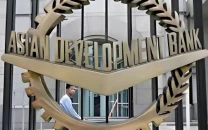Pakistan's public debt spiral
Global movement seeks just, sustainable financial solutions for developing nations

Those who look carefully at Pakistan's 2025-26 budget will not fail to notice a startling detail: the total expenditure on debt servicing and foreign loan repayments amounts to a little less than half – 43% to be precise – of all government expenditure. This is by far the largest single line item in the budget.
Compare this to other major expenditures: federal government expenses are 12%, development expenditure is 6%, and defence and services are 8%. Other vitally important sectors such as education, health care, and social services barely make it out of the low single digits.
Further, the budget plans to take on new debt of Rs11 trillion. This will be added to the already crippling level of existing debt, which stands at Rs76 trillion. So by the time 2026 comes around, Pakistan's total debt would have reached Rs87 trillion.
At current exchange rates, this is approximately $300 billion. Compare this to a GDP of $400 billion, and you get a debt-to-GDP ratio of 75%. This is well above Pakistan's own legal threshold set by the Fiscal Responsibility and Debt Limitation Act of 2005, which limits this ratio to 60%.
So Pakistan's total debt, already over the legal limit, is set to increase even more. This will naturally lead to an inexorable increase in debt servicing costs, which, other things being equal, will squeeze even further the already paltry amounts available for other critical sectors such as health, education, social support, and infrastructure.
All this is worrying by itself. But what is of even greater concern is that there seems to be no appreciation by the government of the danger posed by ever-increasing debt – and no attempt to even outline an escape route from this downward path to inevitable insolvency.
It is clear that, should this addiction to ever-increasing debt continue unabated, the time will come when almost all of the government's revenues will go to debt servicing. Eventually, the sovereign country of Pakistan and its 250 million people will toil not for their own improvement but for the exclusive benefit of their lenders. To be sure, there are ways out of this debt sinkhole. But these require competent leadership at the political level, which unfortunately does not exist – not outside, nor inside Adiala jail. So, a solution will have to wait until such leadership comes into existence.
Pakistan's situation, while serious, is not unique. Many other developing countries are stuck in the same predicament: they have too much debt, much of their income is spent on paying interest on this debt, and not much is left over for the truly important aspects of development. Fortunately, as a consequence of the global nature of the problem, there are international efforts to address this issue.
One of these was initiated – perhaps surprisingly – by the late Pope Francis. The Pontiff was disturbed that poor countries and their people were drowning in a whirlpool of debt from which it seemed there was no escape. He was keen that the problem be addressed by some of the best minds in economics.
To this end, he instructed the Pontifical Academy of Social Sciences to engage the services of the Initiative for Policy Dialogue at Columbia University to prepare a report on the issue, outlining how this global problem could be addressed.
The report, with the somewhat unwieldy title of "A Blueprint for Tackling the Debt and Development Crises and Creating the Financial Foundations for a Sustainable People-Centred Global Economy", was released last week. Its lead author is the Nobel Prize-winning economist Joseph Stiglitz, who is professor of economics at Columbia University.
The report begins with the following sentence: "The developing world is facing dramatic debt and development crises. A debt crisis should not be narrowly defined as a matter of countries defaulting on their obligations to creditors. For many nations, the real default is not a legal or financial one, but a social and development one: They are defaulting on their people, their environment, and their future."
It goes on to say: "To meet obligations to their external creditors, debt-distressed countries are sacrificing investments in education, healthcare, infrastructure, and climate resilience. Core aspects of national sovereignty are put into question as economic policy serves creditors rather than citizens. National politics is delegitimised if fiscal and financial policies are in the service of finance rather than in the service of development."
The 30-page document makes for compelling reading. It assesses the scale and nature of the problem and goes on to analyse the issues from multiple perspectives. These include, for example, structural flaws in the financial system, principles for debt resolution, reforming global governance, and rethinking sovereign debt markets.
It critiques the International Monetary Fund (IMF)'s lending and surcharge policies and calls for the elimination of the Fund's regressive surcharges. It recommends setting up an international bankruptcy court for sovereign debt, or at minimum, a robust mediation mechanism.
Finally, it proposes some urgent actions and concludes that debt crises are not simply technical problems — they are moral and political crises that reflect power imbalances and structural injustices. To end the cycle of debt dependency and underdevelopment, the world must create new financial rules grounded in equity, justice, and sustainability.
There is usually a long and difficult road from a policy document such as this to the goals it seeks to achieve. This report is a valiant and necessary first step to tackle a critical problem that besets many developing countries.
It is important because it holds out the promise that, if the global financial community can get together and set narrow self-interests aside, there is hope to improve the well-being of billions of people whose lives are benighted by a cyclone of ever-increasing debt.
The writer is a Chairman of Mustaqbil Pakistan and holds an MBA from Harvard Business School




















COMMENTS
Comments are moderated and generally will be posted if they are on-topic and not abusive.
For more information, please see our Comments FAQ